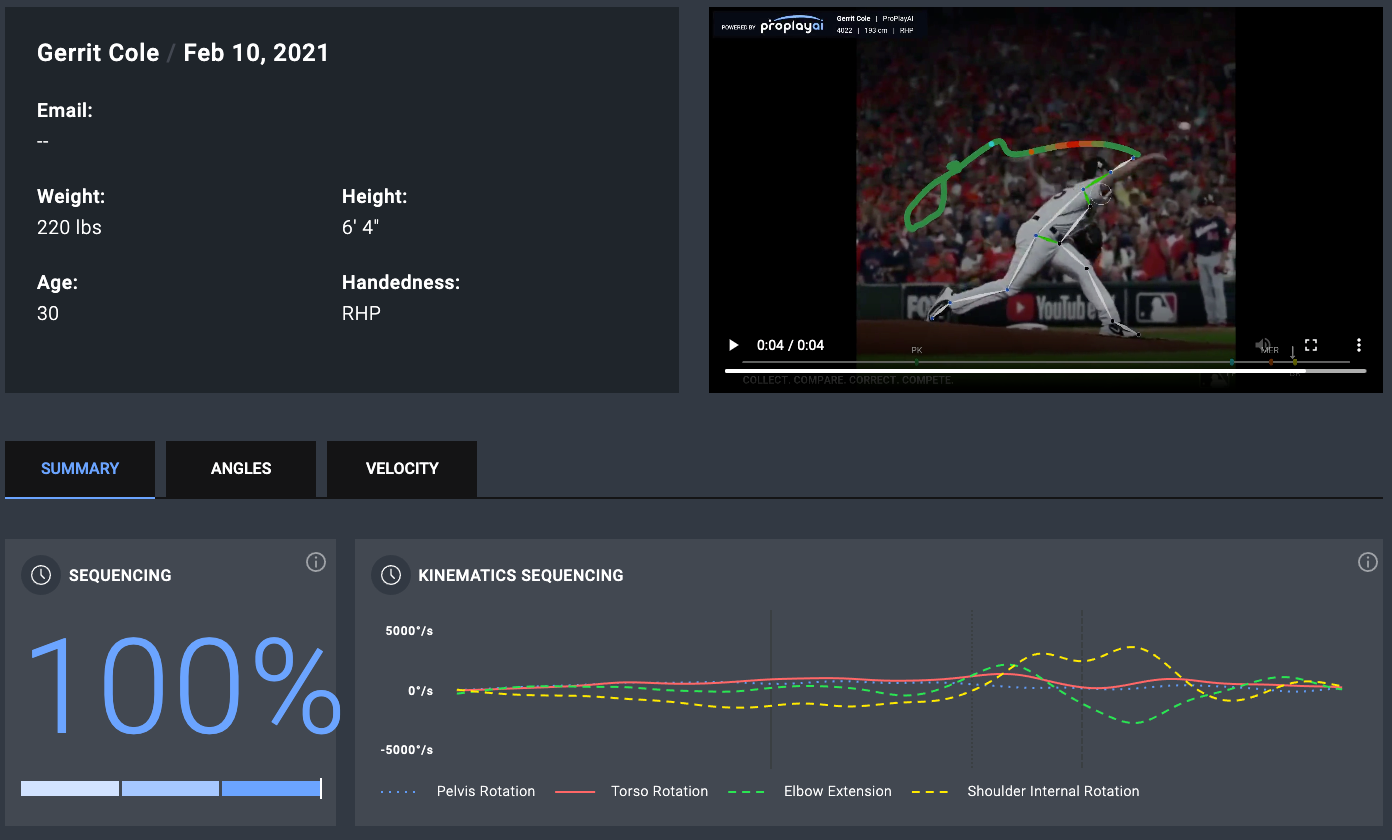Introduction to
Biomechanics Using PitchAI
Colin McKinnon, PhD / Elora Brenneman Wilson, PhD
- Introduction
- Exercise
- Basic Metrics
- Intermediate Metrics
- Advanced Metrics
- Expert Metrics
- Wrap Up
- Quiz
Advanced Metrics
The advanced metrics are Sequencing (and Kinematics Sequencing), Efficiency, and Deception. These metrics are often studied in conjunction with external data, like velocity, spin rate, workload, or intensity level. Understanding the basic and intermediate metrics provides a great foundation for interpretation of the advanced metrics. Unlike the basic metrics, these values are not as simple as “more is better”.


The advanced metrics are Sequencing (and Kinematics Sequencing), Efficiency, and Deception. These metrics are often studied in conjunction with external data, like velocity, spin rate, workload, or intensity level. Understanding the basic and intermediate metrics provides a great foundation for interpretation of the advanced metrics. Unlike the basic metrics, these values are not as simple as “more is better”.
Kinematics Sequencing (and Sequencing) is a commonly studied biomechanics concept broadly describing how energy is transferred from the lower half to the ball, along a series of body parts often referred to as the kinetic chain. In theory, the optimal kinetic chain results in a kinematics sequence of the force from the lead leg transferring into the pelvis, causing a peak rotational velocity of the pelvis, transferring energy next through the hip-to-shoulder separation, and a peak rotational velocity of the upper body and trunk. This energy is passed along to the arm, and a peak extension velocity of the elbow is followed by a peak internal rotation velocity of the shoulder. The Sequencing score represents how many of the components of the kinetic sequence are in the proper order – with a 100% being a perfect score with the sequence described above. If the pelvis came first, followed by the trunk, but then the elbow and shoulder – that would be a 50% score.
Throwing harder exposes the body to higher forces, and a higher torque on the elbow. However, how you move can cause one pitcher that throws 95 mph to have higher forces on their elbow compared to another pitcher throwing the same velocity. The Efficiency metric in PitchAI represents the ratio between arm speed and torque. In our database of close to 300 professional and NCAA Division 1 pitchers, we know what the average ratio is for all pitchers – in the PitchAI App, we convert that value to a percentile. This produces an efficiency score in units of 0-100 – an efficiency of 95% means that this pitcher is more efficient than 95% of the pitchers in our database.
Pitching performance is often about velocity and mixing of pitches – a proper sequence of fastballs and offspeed pitches can keep hitters off balance. The ability for a pitcher to make it difficult on hitters to pick up the ball out of the hand is a huge advantage. The Deception metric represents the amount of time, in units of milliseconds, a hitter would be able to see a ball from behind the pitcher’s body. Of course, throwing with higher velocities, better tunnelling, and taking advantage of seam shifted wake could also take advantage of these factors.
